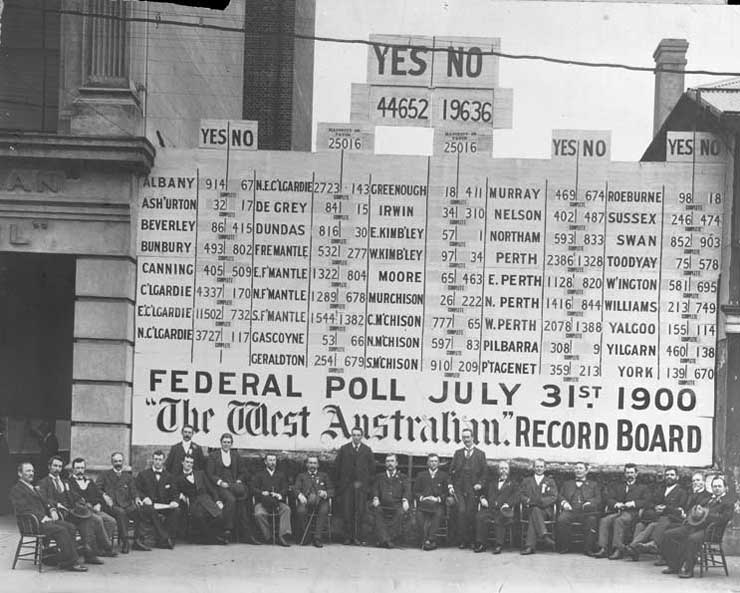 The 'West Australian' polling board for the Federation referendum, 1900
The 'West Australian' polling board for the Federation referendum, 1900
TLF ID R3045
This is a black-and-white photograph that shows a huge polling board with the results of the Federation referendum in Western Australia, which was held on 31 July 1900. The board shows that Western Australia voted to join the Commonwealth of Australia by 44,652 votes to 19,636. It also shows the results for each of the electorates in the colony. A group of politicians and campaigners is seated in front of the board, which was erected outside the offices of 'The West Australian' newspaper in Perth. The photograph measures 29.6 cm x 36.7 cm.
